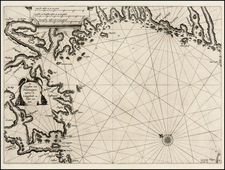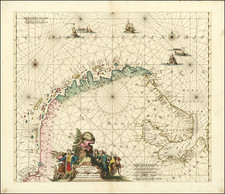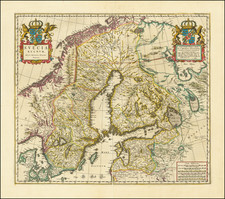This map, titled Veikart over Norge and crafted by J. Waligorkis and N. Wergeland, offers a comprehensive representation of Norway’s road network as it stood at the time of its creation. The map was issued in at least 6 editions over the course of several decades.
The map meticulously details the various regions of Norway, highlighting administrative divisions, key towns, and significant geographical features.
Key Features of the Map:
-
Full Map:
- The complete map provides an extensive overview of Norway’s road infrastructure, with color-coded regions to distinguish between different administrative areas. The map also includes topographical details, indicating the mountainous terrain that characterizes much of Norway’s landscape.
-
Key:
- The key provides essential information for interpreting the map’s symbols and notations. It includes markers for different types of boundaries (e.g., county and district boundaries), cities, towns, main and annex churches, post roads, and various types of stations (e.g., railway, telegraph).
- Additional symbols denote locations of industrial significance, such as ironworks, copperworks, silverworks, and glassworks. The key also explains the representation of elevation above sea level, giving a detailed context for Norway’s varied topography.
-
Map Detail:
- The detailed sections of the map offer a closer look at specific regions, showcasing the intricate road networks and connections between towns and cities. These details are crucial for understanding the local infrastructure and the accessibility of various areas.
- The details also highlight significant natural features such as rivers, lakes, and mountain ranges, providing a fuller understanding of the geographical context within which the road networks exist.
-
Inset Map of the Northern Coast:
- The inset map focuses on the northern coastal regions of Norway, providing detailed coverage of this less accessible but strategically important area.
- This section includes detailed depictions of fjords and coastal settlements, illustrating the unique maritime geography that has historically influenced Norway’s development.
Administrative Divisions:
- The map divides Norway into several administrative regions, each marked by distinct colors and labels.
- The list of "Amter" (counties) and "Fogderier" (districts) details the subdivisions within each county, providing a clear framework of administrative governance in Norway at the time.
- These divisions are crucial for understanding the local governance and the organization of Norway’s infrastructure and services.
Historical and Practical Context:
- The map reflects Norway’s emphasis on developing a robust road network to connect its widely dispersed population centers. This infrastructure was vital for facilitating trade, travel, and communication across the country’s challenging terrain.
- The map’s creation and the detailed attention to industrial sites highlight the period’s economic priorities, emphasizing the importance of mining and metallurgy to Norway’s economy.
Overall, this map is an invaluable historical document, providing a snapshot of Norway’s road infrastructure and geographical understanding during the period it was created. Its detailed annotations and comprehensive coverage make it a vital resource for understanding Norway’s development and administrative organization in the context of its natural landscape.











![[Norway]. Regnum Norwegiae . . .](https://storage.googleapis.com/raremaps/img/small/89546.jpg)


![[ Bergen, Norway ] Berga Noorwegiae](https://storage.googleapis.com/raremaps/img/small/93728.jpg)
![[Bodø] Bodöe](https://storage.googleapis.com/raremaps/img/small/90249.jpg)
